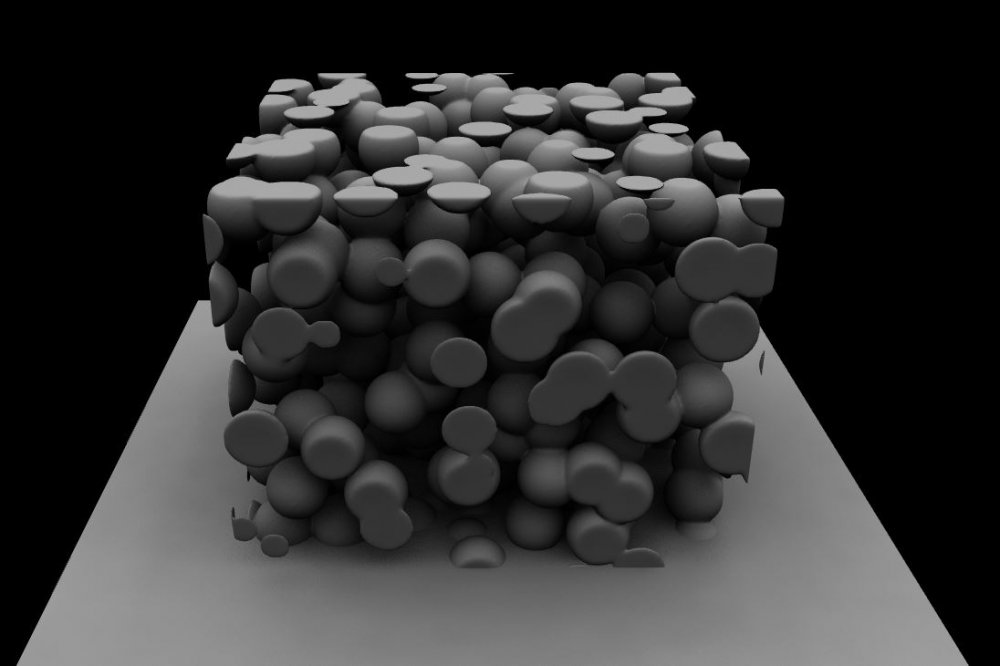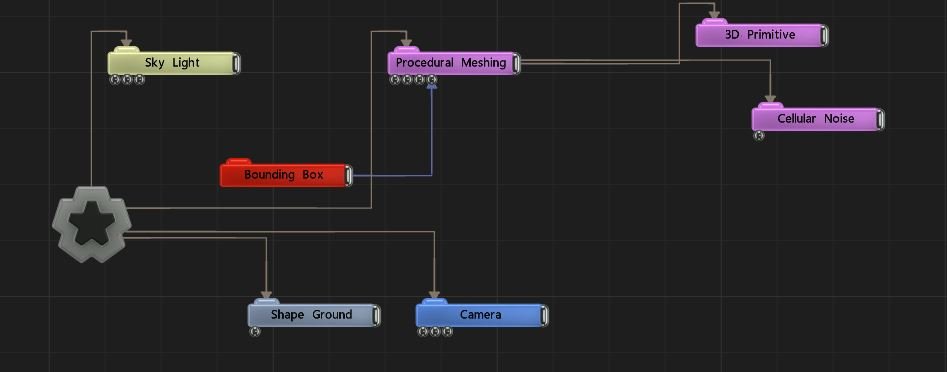Cellular Noise
Updated: 22 Mar 2024
Generates a cellular noise pattern for a procedural.

Updated: 22 Mar 2024
Generates a cellular noise pattern for a procedural.

This node generates an infinite cellular noise pattern. It works by dividing the space in to cells and placing a point in each cell, which is expanded to a sphere. the points are then randomly offset to form the cellular noise.
Nodes connected to this node will generally follow the parent child hierarchy. Other Procedural Generator nodes can be configured to combine with this shape using their CSG modes, and displacement nodes will only apply to this shape.
These properties control the core behaviours of the node.
| Parameter | Details |
|---|---|
| Distance Offset | Offsets the distance field values, causing the generated distance field to expand of contract. |
| Cell Size | Size of the generated cells. |
| Jitter | How much the spheres are randomly moved from their original cell positions. |
| CSG Mode |
These options change how a this procedural node combines with the existing of the procedural system.
|
| CSG Blend Weight | How much the new procedural blends with the old procedurals, depending on the CSG Blend Weight. |
| CSG Stair Count | How many steps in the transition when using the “Stairs” CSG Mode. |
| Affect Colour | Affect the colour of the generated procedural system. only functions with ‘Generate Colours’ enabled in some Procedural Render nodes. |
| Always Enabled (No Time Bars) | When enabled, this node will run regardless of time bar enable/disable. Due to how Notch handles shader generation with procedurals, with this enabled the node runs more efficiently. |
| Material Colour | Modify the colour for the procedural material. |
| Custom CSG Code | Type your Custom code here, using the HLSL language. Read more on Editable Code. |
The properties control the time at which the node is active. See Timeline for editing time segments.
| Parameter | Details |
|---|---|
| Duration |
Control the duration of the node’s time segment.
|
| Node Time | The custom start and end time for the node. |
| Duration (Timecode) | The length of the node’s time segment (in time). |
| Duration (Frames) | The length of the node’s time segment (in frames). |
| Time Segment Enabled | Set whether the node’s time segment is enabled or not in the Timeline. |
| Name | Description | Typical Input |
|---|---|---|
| Transform Controller | Set the origin/center point of the noise. | Null |
| Transform Modifiers | Apply the transforms of another node to this node. | Null |
| Target Node | Modifiy the rotations of the node to always direct the z axis towards the input. | Null |
| Local Transform Override | Apply the transforms of another node to this node, relative to its parent. | Null |